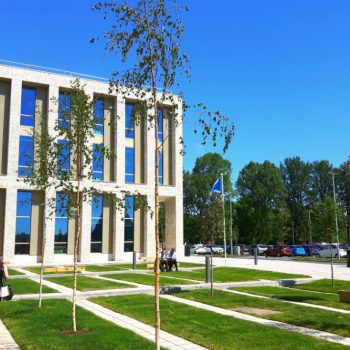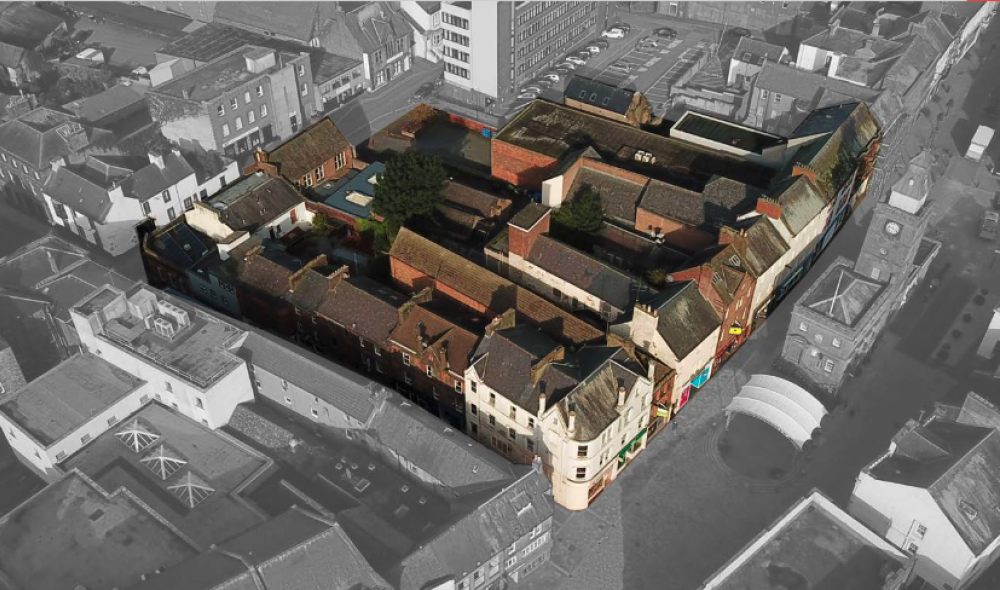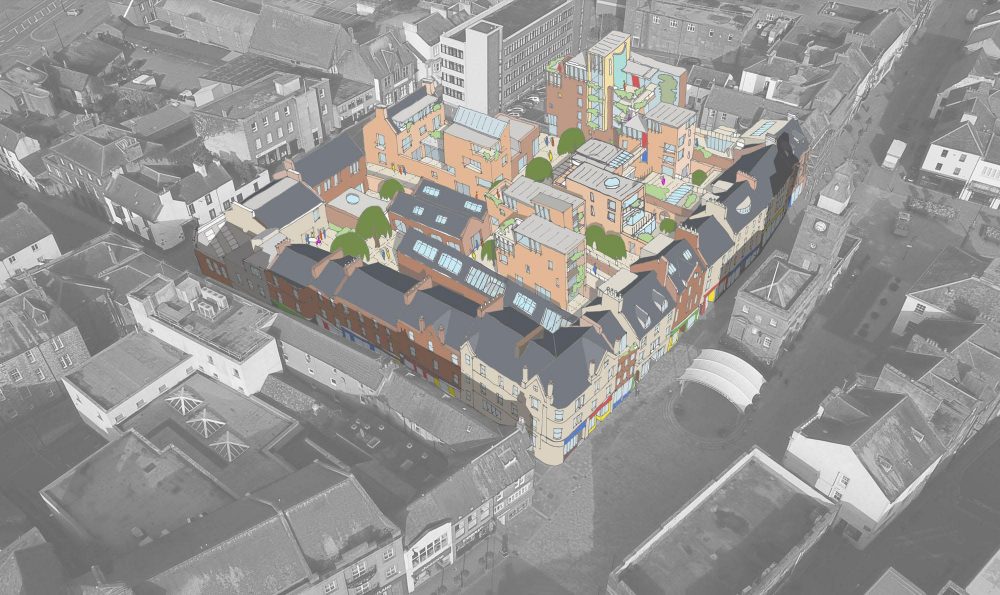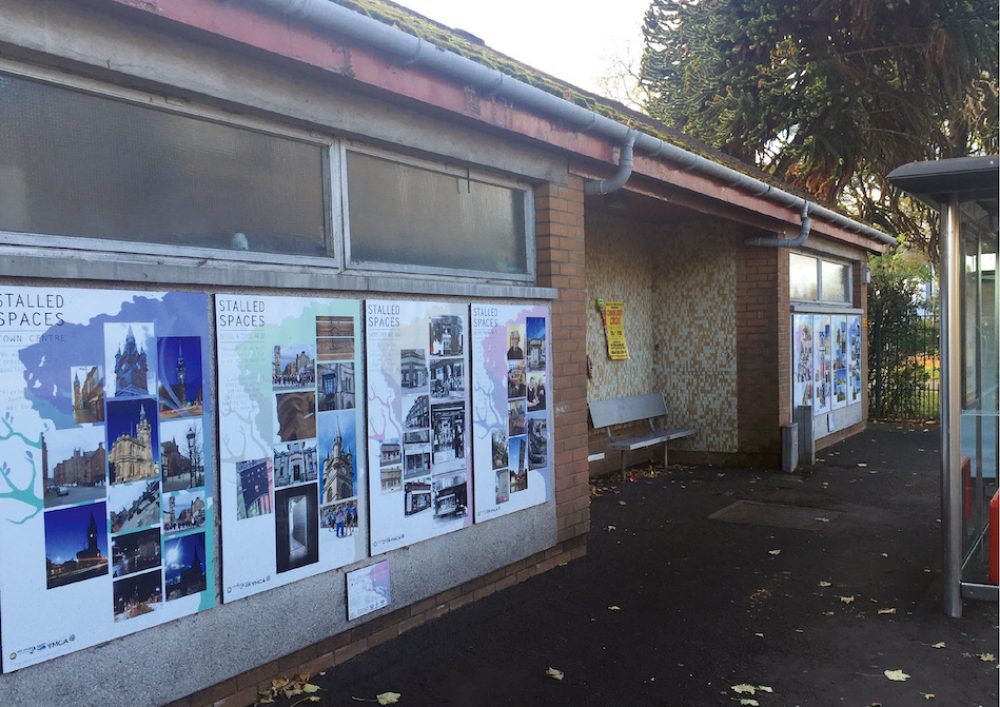Vacancy and dereliction
Derelict sites can have a big impact on town centres. Quite apart from potential safety concerns around empty buildings or gap sites, neglected land and buildings can deter investment and are damaging to community pride and individual mental wellbeing, as research by the Scottish Land Commission has shown.

Bringing unloved town centre spaces back into productive use can involve anything from popup events to new buildings, as the examples in this section show. Whatever project you decide to pursue, it can help create jobs, restore community esteem, address climate change, and improve health and wellbeing.
Heritage can be a great focus for collaborative action around shared love of historic buildings, community pride and revitalisation of construction skills. Many of the examples in this section received significant support and resources from Historic Environment Scotland which continues to offer financial support to town centres through schemes like the Conservation Area Regeneration Scheme (CARS), that has invested over £40m in Scottish town centres over the last decade.
Have a look too at these other sections of the Toolkit:
- Community facilities: Town Centre First has examples of giving new life to old buildings for community facilities.
- Town centre living has examples of how to get empty property back into use as homes.
- Shops and retailing, particularly the examples of shopfront improvements.
Community led: Midsteeple, Dumfries
Like many towns throughout Scotland, Dumfries town centre has its fair share of empty and poorly maintained buildings. But rather than simply accepting that as a given, the local community is doing something about it. They are buying up buildings and redeveloping them for new businesses and homes, to bring new life into the town centre. How did they going about it?
Midsteeple Quarter was a response to what emerged from community engagement led by The Stove Network, a community-led social enterprise in the town centre, which revealed a consensus amongst local people, businesses, groups and agencies for a more diverse town centre with more residents, a mix of new businesses/shops, and culture, leisure and services. The project focused on a section of the High Street, adjacent to the Midsteeple, where almost all the properties have been empty or disused for some time. Many are significantly decayed as a result of neglect by absentee owners: a familiar story for many towns across Scotland.
Between 2012 and 2018 The Stove Network led a diverse series of events, commissions, activities and workshops which started by asking the question ‘What is the future Dumfries you want?’ and gradually developed a community-led vision for the town which centred on community ownership, a diverse High Street and bringing people back to live in the town centre.
The project has been delivered by a community-led property development company (a community benefit society called Dumfries High Street Limited, trading as Midsteeple Quarter). Voting membership is open to everyone in Dumfries; its 400 members elect a board annually, who employ a project team for day-to-day delivery. The Blueprint for the Quarter contains the economic case for the project and a phased and costed masterplan for its delivery. It is intended to be a tool to bring in other stakeholders: the local community, local authority, housing organisations and other funders.
Midsteeple Quarter, the organisation, is wholly independent. It continues to work in partnership with The Stove Network and other organisations. Funding has been sourced from the local community, Dumfries and Galloway Council (Town Centre Living Fund), The Holywood Trust (which is focussed on young people in Dumfries and Galloway), Scottish Government (Regeneration Capital Grant Fund), South of Scotland Economic Partnership and Creative Scotland in order to help get the project up and running with solid foundations.
The vision for the redevelopment of the Midsteeple Quarter has emerged over a number of years - and it continues to evolve, along with the needs of the town’s residents.


The eight buildings in the project area are owned by a mixture of public and private investors. One of the most prominent buildings, 135-139 High Street, was owned by the local authority and transferred to the community development company through a Community Asset Transfer. Plans are at an advanced stage to completely redevelop this property by 2022 as a creative enterprise centre at street level and six new flats for rent on upper floors. The ground floor has operated as The Oven, a pop-up community and creative space, since late 2018. The Oven kept simmering even during the coronavirus lockdown in 2020 as an experimental and prototyping contemporary art space with online shows and events.
Check out the blueprint for Midsteeple Quarter for more details, and the Inspiration section of this Toolkit to learn more about the exciting collaborations that are happening in Dumfries town centre.
Private sector led: Kilmarnock Opera House
Kilmarnock’s historic Opera House was a sorry sight: gutted by fire in 1989 leaving just a burnt-out facade, the once magnificent building sat derelict for over 20 years, just yards from the station on the town’s busy John Finnie Street. Multiple ownership of the property and financial constraints meant that various development proposals came to nothing.
But now the B-listed façade has been restored, and the building is home to modern offices providing accommodation for 250 council employees in the heart of the town centre.
What happened? Kilmarnock Townscape Heritage Initiative was developed by East Ayrshire Council and Historic Scotland with a budget of almost £5 million to be spent on conservation and re-use of buildings in the town centre over a 5 year period. The project evolved from an existing Conservation Area Regeneration Scheme already successfully under way in the town centre. Together, Townscape Heritage Initiatives and Conservation Area Regeneration Schemes have successfully invested millions of pounds in historic buildings in town centres throughout Scotland over the last decade and more.
The Opera House was one of the new Townscape Heritage Initiatives' priority projects. To make the £7.5m project happen, the council took a lead role, entering into a develop-and-purchase agreement with local firm Klin Developments to give them the certainty of a guaranteed occupier for the building upon completion. This enabled full restoration of the façade with extensive stabilising works, structural repairs, repointing and indenting carried out to conserve its former glory. A new 5-storey office building was built behind the façade, occupied by the Council as part of its Town Centre First strategy of relocating staff into the town centre. The project has helped to revitalise this part of the town centre, with other subsequent projects building on its success, such as the Ingram Enterprise Centre which has conserved another splendid Victorian building on John Finnie Street.
For more information on the project, see the case study in this report (page 59) about vacant and derelict land produced for the Scottish Land Commission.
Public sector led: Council headquarters, Dumbarton
Conceived as a catalyst for the regeneration of Dumbarton town centre, the £15m new council building has retained the prominent A-listed façade of the former Burgh Hall and Dumbarton Academy (which had been derelict for many years) and developed a brand-new state of the art headquarters building for 500 staff. The building has improved access to staff and services for residents, boosted trade in nearby businesses, stimulated development of adjacent sites, and brought savings to the council in the region of £400,000 per year through energy efficiency.
Equally importantly, the project is putting the Scottish Government’s Town Centre First Principle into action and helping bring new spending, investment and confidence to the town centre. Moving public servants into the town centre has brought a vacant building back to life. In a conscious effort to simulate the adjacent High Street, no canteen was provided in the building: staff are encouraged to use local shops and cafes, and new businesses have set up in the surrounding streets to meet this demand.
Since the new headquarters opened in 2017, development of adjacent town centre sites has begun including 160 new homes and a new supermarket, to encourage even more footfall back into the town centre. The award-winning project has also brought back to life a prominent historical building in the town centre, with a major focus on heritage conservation and design excellence, thanks to support from Historic Environment Scotland with a £0.5m grant. For more information, check out this Historic Environment Scotland case study.
Temporary use: Renfrew
Buying vacant buildings or land is an expensive and complicated business; temporary projects can be transformational too, in a smaller way but at a fraction of the cost. That’s why so many communities up and down the country are doing “Stalled Space” projects, where community groups take over vacant land or buildings for a limited period of time to create anything from food-growing projects or community gardens to events or arts spaces.
One unusual site which has been transformed using the Stalled Spaces approach is in Renfrew: a disused public toilet block in the town centre, next to a bus stop at the entrance to Robertson Park. Renfrew Development Trust came up with an innovative proposal to build bridges across the generations: young people from Renfrew YMCA interviewed elderly people in local sheltered housing complexes to collect memories of the town, then partnered with students from West College Scotland to create storyboards for the walls of the disused building – turning an eyesore into an outdoor exhibition. 40 local people were involved in creating the exhibition. The project cost £5,000 and was supported by Renfrewshire Council and Engage Renfrewshire.

“It was meant to be there for three months, and it’s still there”, Iain Cunningham, third sector development officer at Engage Renfrewshire, told the news website Sceptical Scot. “People are proud of it, it’s a really good piece of work. But it’s about more than just the building: the young people were fascinated by the stories the old people told, and they have links with the college now, so they feel more confident about applying for courses there.”
There’s more information about the project here. Other community-led Stalled Spaces projects in town centres include:
Architecture and Design Scotland’s Stalled Spaces Toolkit has lots of inspiration and helpful advice about how communities can make vacant and derelict land come alive in town centres, covering how to find out who owns land, how to get funding, how to organise yourselves, and how to manage a project. Contact details: info@ads.org.uk.
Resources
Architecture and Design Scotland has produced a Stalled Spaces Toolkit with practical advice and inspiration for communities who wish to make temporary use of vacant and derelict land for anthing from community gardens to events spaces. The toolkit covers how to find out who owns land, how to get funding, how to organise yourselves, and how to manage a project. Contact details: info@ads.org.uk.
Buildings at Risk Register for Scotland provides a comprehensive online toolkit about how to save endangered historic buildings, together with detailed information about individual historic buildings at risk throughout the country.
Built Environment Forum Scotland offers a range of case studies, fundraising toolkit, briefings, advocacy toolkit and other useful information particularly related to the historic environment.
Grand Bequest is a Scottish buildings-at-risk resource based in Glasgow.
Historic Environment Scotland has various sources of grant funding and advice to support the re-use or enhancement of vacant and historic buildings in town centres, as this example from Campbeltown shows. Their YouTube channel has inspiring and informative videos.
Heritage Trust Network brings together heritage professionals and enthusiasts to tackle buildings at risk. The network has over 90 member organisations in Scotland and 500 across the UK, all of whom are rescuing and regenerating buildings and are keen to support each other.
Local authority planning departments may be able to offer expert advice and possibly funding to help tackle vacant or derelict sites and buildings; what is available differs between local authorities around the country. Whilst responsibility for maintenance of any building rests with its owner, local authorities also have discretion to use certain powers:
- Dangerous or defective buildings: Building (Scotland) Act 2003, sections 28-30.
- Listed Buildings: Planning (Listed Buildings and Conservation Areas) (Scotland) Act 1997, section 49 onwards.
- Sub-standard housing: Housing (Scotland) Act 2006.
- Condition of land: Town and Country Planning (Scotland) Act 1997, section 179.
- Building repairs and maintenance of private open space: Civic Government (Scotland) Act 1982.
- Power to advance well-being: Local Government In Scotland Act 2003.
- Compulsory Purchase Orders.
Local authorities also have the powers to:
- Use the Town Centre First Principle to deliver public services and capital investments, driving up town centre footfall and investment activity and encouraging other landowners to follow suit (see the Dumbarton and Kilmarnock examples in this section).
- Create a one-stop shop or key council contact for town centre businesses, for example helping them to navigate through statutory consents like planning, building control and environmental protection requirements (for example West Lothian Council’s network of town centre officers).
- Use collaborative town centre visioning and community engagement to set the agenda for Local Development Plans to help to deliver a common community vision, with many examples from Annan to Stromness.
- Develop strategies for re-populating town centres with residential use, such as in Perth (in this section) and Alloa (see Streets and Spaces).
National Lottery Heritage Fund is a major funder of heritage projects throughout the UK; its website contains a range of interesting case studies.
Scotland's Land Information Services is an easy-to-use Scottish Government website which enables you to find property owners, check if a property is on the land register, search for property prices and buy property documents.
Scottish Land Commission provides information on funding for vacant and derelict land projects and community ownership of land or buildings, plus other information about re-use of derelict or vacant buildings and land. It is all part of the commission’s approach to making more of Scotland’s land. Their Impact Tool is a simple-to-use way for local communities to assess and record the impact of vacant and derelict land on the community's wellbeing.
Under One Roof: an online resource full of useful information about maintenance and management of tenements, flats and other common property (old and new) for owners, tenants and advisers.